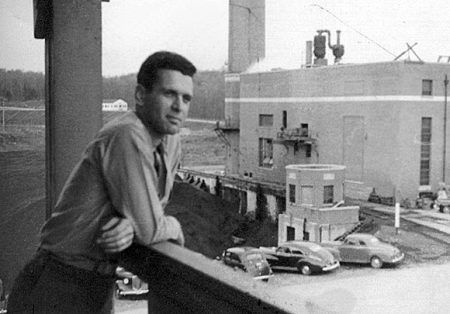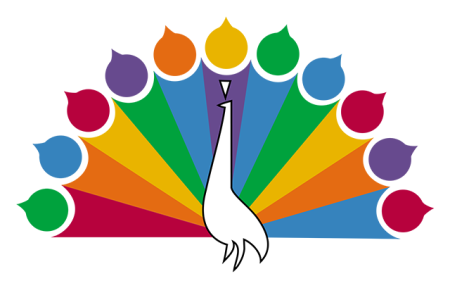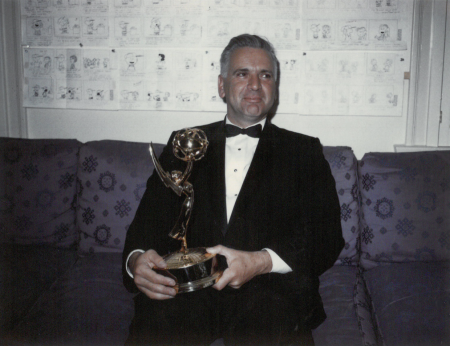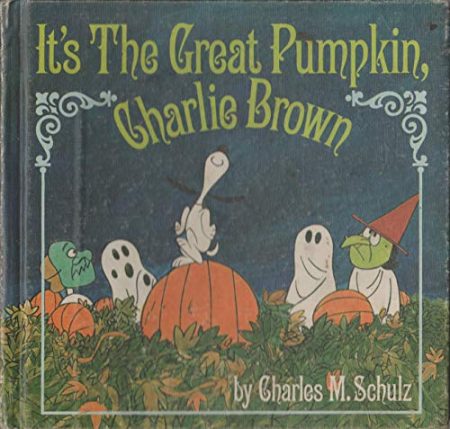Not many people know just how impressive and historic the career of Ed Levitt was. He not only worked on some of the most beloved classic Disney animated features, he also had a huge impact on the design, look, and story of a diverse collection of cartoons released in the 50s and 60s. He was considered by his peers to be one of the best layout, background, and storyboard artists in the history of animation. He started at Disney at the age of 21 during the making of Snow White, doing rotoscope tracings. Disney quickly moved him to working on backgrounds, which he did for Pinocchio, Fantasia, and Bambi.
Ed Levitt is actually quite in step with what’s happening right now in that he was very pro-union, and picketed during the 1941 strike. He did return to Disney to work on the propaganda film Victory Through Air Power, which had a huge impact on turning the tide of World War II. You can read about just how important that film was on this Walt Disney Family Museum blog post. Shortly thereafter, Levitt enlisted in the Marines, creating training films as part of the Marine Corps Photographic Section, in Quantico, Virginia. His liberal politics drove him to make several anti-war films considered very much ahead of their time, including “Where Will You Hide”, a 1948 short about the risk and perils of nuclear war. Jim Bacchus was one of the narrators, and it was only his second film.!

You know that famous Peacock logo used by NBC? Levitt chose the colors for the technicolor version when the studio switched from black and white in 1956.

Levitt went on to work in animation in both advertising and pop culture, including mid-century styled cartoons like Crusader Rabbit and Gerald Mac Boing Boing, which had a story by Dr Seuss, and during which he worked under none other than Bill Melendez. He also worked with Melendez at Playhouse Pictures, creating commercial spots for Ford. Then in 1964 Melendez opened his own studio, and immediately hired Levitt to join him there.
As for his part in the Peanuts cartoons many of us know and love, Levitt worked on 12 Charlie Brown tv specials, starting with A Charlie Brown Christmas in 1965. Beyond having created some of the best backgrounds for that great classic (like the famously stylized and hyper-colorized Christmas tree lot), one of his greatest claims to fame was that he alone predicted the cartoon would become a classic in the future, and be played every single year.

When everyone else thought they had a flop on their hands, Levitt said, “Don’t be silly. This film will be shown for a hundred years!”
He also coined the term “graphic blandishment”, which was what Melendez used to allow credits for the various artists and animators who worked on the Peanuts cartoons.

As we all know now, A Charlie Brown Christmas became a huge classic, even winning a Primetime Emmy Award for Outstanding Children’s Programming. It also won a Peabody Award!

It was during the long stint working with Melendez Studios that Levitt created the cover for the storybook version of It’s The Great Pumpkin, Charlie Brown. He really captured Snoopy’s joy, and the fun of the Halloween special:

He also provided, as he said, “graphic blandishment”, for Snoopy Come Home, so we thought it was right and fitting that we had some great pieces from that full length feature in our Peanuts show! (You can see all the production cels available at ArtInsights from Snoopy Come Home HERE)
Levitt was very involved in the support and recognition of workers in the animation business. He was a 2-time president of the Screen Cartoonist Guild and an active member of the Academy of Motion Picture Arts and Sciences.
During the 60s, he worked on 12 of the Peanuts TV specials that have become classics, but also contributed to many other TV shows, as well as movies like It’s A Mad Mad Mad Mad World (on which he worked with famed titles designer Saul Bass) and The Incredible Mr. Limpet.
Meanwhile, in the mid-60s, Levitt bought a ranch in Lake Hughes, and commuted an hour to work at Melendez Studios, growing fruit and raising cattle in his spare time. He ultimately retired from the film business in 1973, and committed himself to ranching full-time. He lived a long, happy life and died at the age of 96.

We at ArtInsights sold the original art of Ed Levitt’s cover art for the 1967 It’s The Great Pumpkin Charlie Brown book. This image not only captures Snoopy at his most joyful, it’s also a testament to Ed Levitt’s lasting impact on the history of animation.


